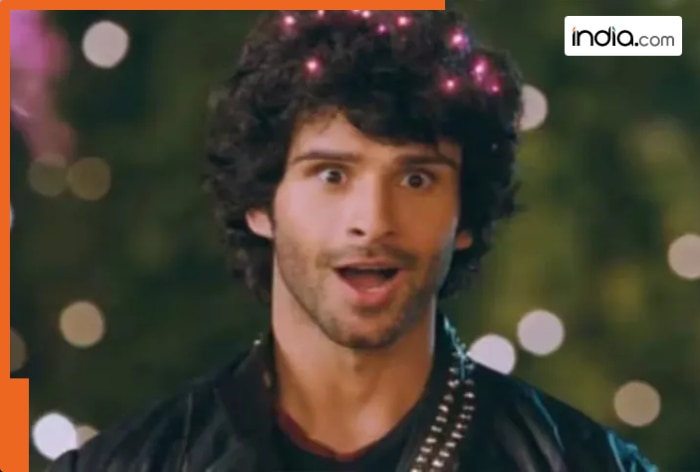Earlier this year, I visited Cape Town, South Africa, for a girl’s trip. The flight to our destination lasted 15 hours — the longest I’d ever been on an airplane. As I settled into my not-quite-comfy-enough premium economy seat (you’d think that for $500, you’d get a little more legroom), two things had me literally buzzing with excitement for the journey ahead: the fact that my row was empty and watching “Crazy Rich Asians” for the umpteenth time.
“Crazy Rich Asians” is a 2018 romantic comedy adapted from the Kevin Kwan novel. The film follows the whirlwind adventure of protagonist Rachel Chu (played by Constance Wu) when she discovers that there’s much more to her long-term boyfriend, Nick Young (a criminally underrated Henry Golding) than meets the eye.
After learning that Nick is actually the heir to a billionaire real estate empire, Rachel is whisked off to Singapore to experience the glitz and glam of his day-to-day in person. To say that Nick’s life is fabulous is an understatement, but Rachel soon learns that all that glitters isn’t gold as she attempts to connect with his uppity inner circle.
It’s been six years since the film premiered in theaters, and the immediate impact of “Crazy Rich Asians” was undeniable: the Jon M. Chu production smashed industry records, quickly becoming the most successful studio rom-com in almost a decade at the US box office, earning nearly $175 million. (Globally, it raked in over $230 million.) Critics praised the silver screen adaptation for its incredible casting and beautiful depiction of Singapore, and to this day, it boasts an impressive 91 percent Rotten Tomatoes score.
Years after its release, what exactly about this movie compels us to rewatch it, especially when we’re in the air?
Beyond introducing audiences to one of the most charming male actors to ever grace Hollywood (cast Golding in more films, you cowards), featuring an all-Asian cast (a rarity), and highlighting aspects of Asian culture (not without some controversy), “Crazy Rich Asians” is just a good, classic rom-com. It hits all the marks for a quality plane watch: sizzling romantic chemistry between the leads without being too risqué for a nosy seatmate, a plot simple enough to not leave you confused if you fall asleep, and a mandatory airplane scene that will make you wish you got upgraded.
Experts Featured in This Article
Sabrina Romanoff, PsyD, is a clinical psychologist specializing in relationships, stress, and life transitions.
Kemi, a frequent international traveler, makes it a point to look for “Crazy Rich Asians” on every single flight she takes. “I’ve seen the movie probably five different times this year alone and know all of the lines, but each time I watch it, it’s like I’m seeing it for the first time,” she shares of her in-flight comfort watch. The emotional wedding scene is her favorite and causes her to burst into tears without fail. “When Araminta (Sonoya Mizuno) steps into the aisle as that cover of ‘Can’t Help Falling in Love’ is playing? Oh, girl. Full sobs every single time.”
The particular itch that this movie scratches in many of our minds is worth noting, according to clinical psychologist Sabrina Romanoff. Our instinctive connection to “Crazy Rich Asians” and other feel-good plane movies is likely a direct psychological response to the stress of being stuck in a metal container thousands of feet in the air. “Many people have an aversion to flying, and for good reason,” Dr. Romanoff explains. “Movies provide the chance to escape all of that stress and discomfort as you leap into the world of the film. Often, the movies we connect to emotionally tend to be most popular on flights.”
Fear and love are the two most compelling and salient emotions in our lives, so it’s no surprise that we enjoy romantic films while experiencing some fear. “People prefer romance and relationship-driven films because these relationships are a critical part of our personal lives, and it can be soothing and healing to accompany the main characters on their emotional journey – which may run parallel to our own.”
So, by watching “Crazy Rich Asians” on repeat during our flights, are we trying to live vicariously through Rachel and her incredible trip to Singapore? Well . . . yes. Sort of.
“When we intentionally narrow our focus on a film, we begin to take the perspective of the main character and often can feel as if the events of the film are happening to us,” says Dr. Romanoff. “This can have strong implications on our brain and body as our own similar experiences and genuine interest and care for the characters can bring the storylines to life as if we were experiencing and feeling them, which leads to an increase in mirror neuron activity.”
Self-proclaimed hopeless romantic Catherine is inclined to agree on the aspirational nature of her tendency to add “Crazy Rich Asians” to her flight watchlist. “Save for the toxic in-laws and elitist, catty rich folks, I, too, would like to go on a first-class vacation with a handsome, rich man who treats me like a princess,” she tells PS. (Honestly, same.)
Catherine adds, “But there’s also something about watching Rachel get on that plane and experience that level of luxury that makes me feel excited about my own trips, even when I’m sitting in a regular seat on the plane. I can be traveling for the most mundane occasion ever, sandwiched between two strangers in a middle seat, and ‘Crazy Rich Asians’ will have me feeling like I’m about to go on the adventure of a lifetime. It’s a tradition that helps me manifest a good trip.”
If these feelings resonate with you, get excited: a sequel to “Crazy Rich Asians” has been floated in recent years. Even though director Chu isn’t making any promises on if and when that might come to fruition, there may be much more to this crazy rich world for fans to explore. No rush — until then, we’re more than content to get cozy under our thin plane blankets and watch this love story unfold on repeat. Pass the Biscoff cookies, please.
Ineye Komonibo is an editor and writer with a love for all things pop culture. Her focus has always been on fleshing out the deep cyclical relationship between society and the media we engage with, ever curious about who we are and what we do because of what we consume.

:quality(85):upscale()/2024/11/14/935/n/43463692/04959eaf67366b14265e77.11183213_.jpg)





